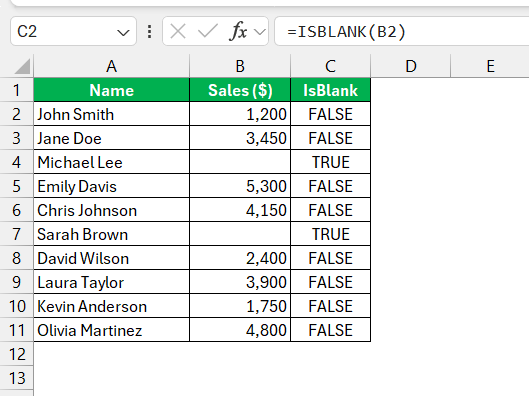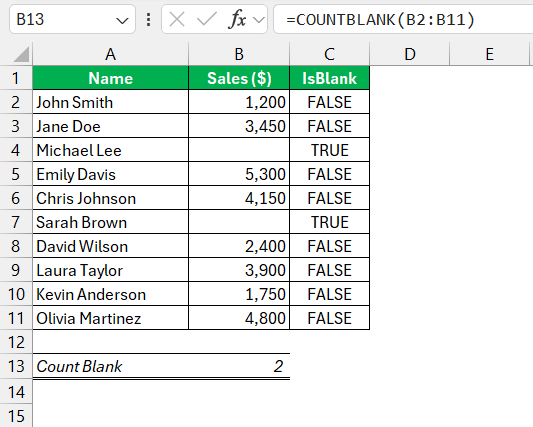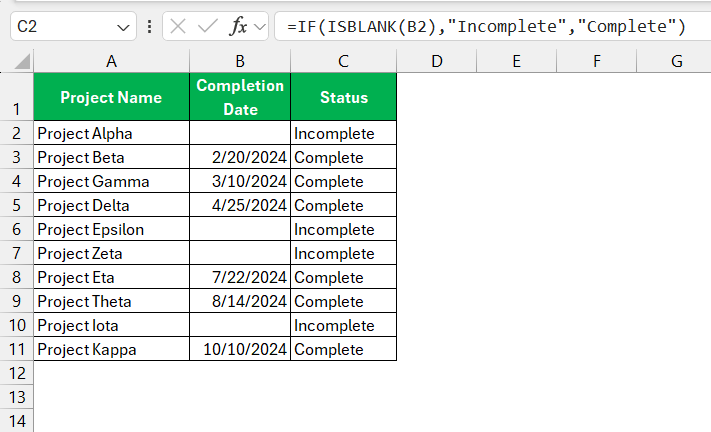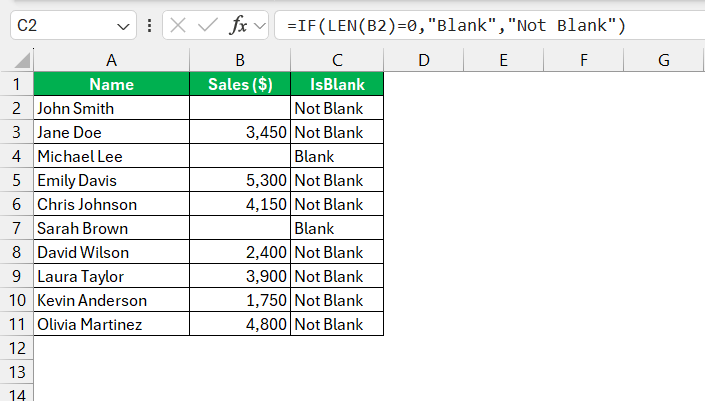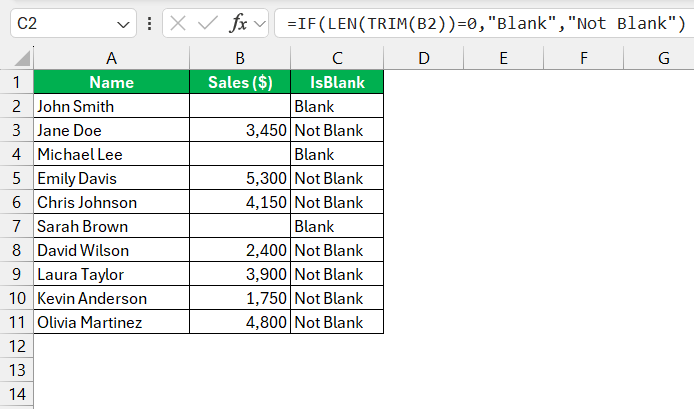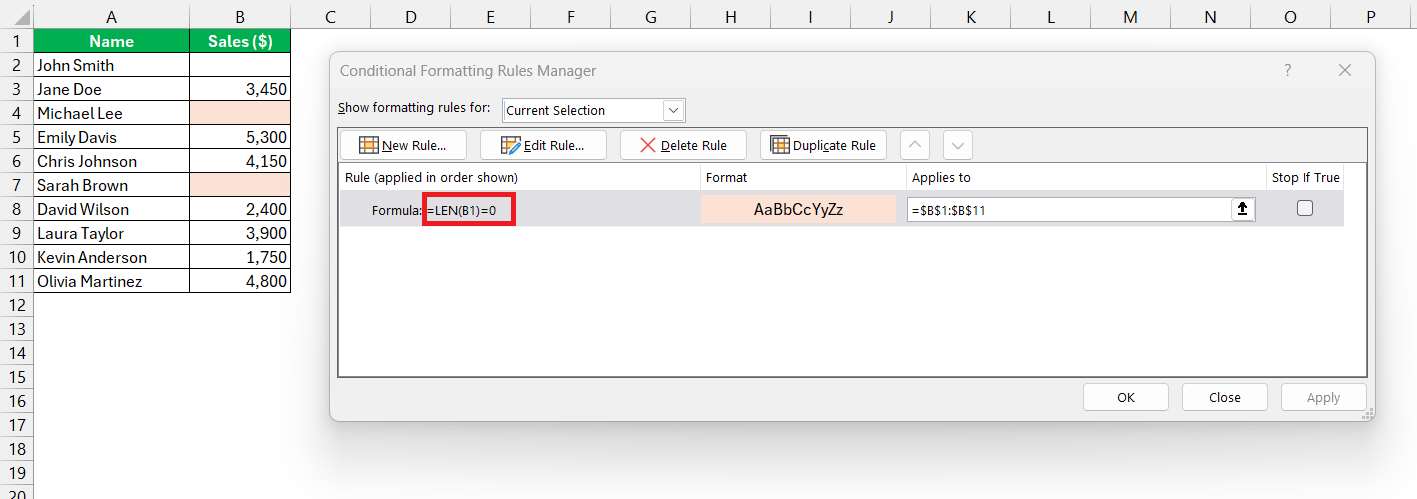Handling blank cells in Excel is a common challenge faced by users looking to ensure data accuracy and integrity. This article delves into various techniques and functions, such as IF, ISBLANK, and conditional formatting, to efficiently manage and address blank cells within your spreadsheets. Whether you’re cleaning up data, performing calculations, or setting up logical tests, understanding how to deal with blank cells can significantly enhance your productivity and reduce errors. Read on to discover practical solutions and tips for Excel If Blank.
Key Takeaways:
- IF and ISBLANK Functions: Use the IF and ISBLANK functions to handle blank cells, ensuring data accuracy by defining specific actions based on cell content.
- Conditional Formatting: Apply conditional formatting rules to highlight blank cells, making it easier to spot and address data gaps.
- COUNTBLANK Function: Leverage the COUNTBLANK function to quickly quantify the number of blank cells in a range, aiding in data validation.
- Zero-Length Strings: Differentiate between true blank cells and zero-length strings using the LEN function to maintain data integrity.
- Custom Formulas: Create custom formulas combining IF, ISBLANK, and other functions to automate responses to blank cells, enhancing spreadsheet functionality.
Introduction to Excel’s Blank Cell Dilemma
The Ubiquitous Presence of Blank Cells in Data Analysis
In my journey as a data analyst, I’ve often encountered the widespread issue of blank cells within datasets. These deceptively simple gaps can create complex problems during data analysis. Whether we’re compiling large databases or merely organizing a small spreadsheet, the presence of blank cells is an obstacle we encounter head-on.
Their manipulative nature can lead to inaccurate results in our calculations or tarnish the otherwise clean aesthetics of reports and presentations.
Overcoming the Challenge with Excel If Blank
We’ve found that one of the most effective ways to overcome this challenge is by using Excel If Blank. This robust feature in Excel provides us with the flexibility to define specific actions if a cell is empty. Essentially, it allows us to implement conditional logic, instructing Excel to perform one action when a cell is blank, and a different action when the cell contains data.
My strong suit lies in creating and utilizing these intelligent conditions to streamline data processing and enhance spreadsheet functionality. It ensures that our data remains clear and our analysis accurate, catering to various scenarios such as skipping calculations for blank cells or flagging them for review.
The IF Function and its Companions
Decoding the IF Function for Handling Blanks
Understanding how to wield the IF function for handling blanks is a skill that has proven invaluable time and again in my work with Excel. The basic structure of an IF function includes three parts: a logical test, a value that Excel returns if the test evaluates to true, and a value that Excel returns if the test evaluates to false.
When we apply this to blank cells, we can craft a logical test that checks for the presence or absence of content using an expression like ISBLANK(B2). If the cell is empty, this logical test returns TRUE, and the IF function can then execute one action. If it’s FALSE, it executes another.
By mastering the IF function, we can build robust spreadsheets that actively respond to data presence without manual intervention. This approach is a cornerstone for dynamic data analysis and presentation, giving us real-time responses as our data evolves.
Leveraging ISBLANK and COUNTBLANK Functions Effectively
Leveraging the ISBLANK function in Excel has consistently been a game-changer when analyzing spreadsheets for empty cells. ISBLANK can be seamlessly combined with other functions to produce dynamic results. Its premise is straightforward—if the target cell is empty, it returns TRUE; otherwise, it provides a FALSE result. ISBLANK thus serves as the perfect criterion for logical conditions when we want actions triggered by the presence or absence of data in a cell.
Similarly, the COUNTBLANK function is a powerful tool that I frequently utilize. This function provides a count of how many cells in a specified range are blank, enabling us to quickly quantify gaps in data. It’s particularly useful in validating data entry completeness or in preparing datasets for analysis.
Both these functions save significant time and effort in data management and ensure that our spreadsheets are precise and user-friendly. Through their application, we can easily monitor and manage the data integrity of our workbooks.
Crafting Smart Formulas
Custom Solutions with IF and ISBLANK
Creating custom solutions with IF and ISBLANK is akin to crafting a fine recipe that caters precisely to one’s tastes. In Excel, these functions blend to form versatile formulas that address specific requirements around blank cells. For instance, we can devise a formula that says, “If this cell is blank, then leave the next cell empty; otherwise, perform a calculation or display a message.”
Consider a scenario where we want a column to display “Incomplete” whenever a certain cell is left blank. The formula in question could be =IF(ISBLANK(B2),"Incomplete","Complete"). Here, ISBLANK acts as the chef tasting for a specific ingredient, and IF responds by preparing the dish—whether to serve up “Incomplete” or “Complete”.
By crafting these customized formulas, we empower our spreadsheets to operate with a higher level of intelligence, automatically adapting to data as it’s entered or modified, thereby streamlining workflow and enforcing data integrity.
Pro Tips for Advanced Users
Dealing with Zero-Length Strings as Blanks
Navigating the subtleties of Excel includes dealing with zero-length strings which can masquerade as blanks but are technically not. These strings can result from formulas that return an empty string as opposed to a true empty cell. To manage these deceptive characters, we need to discern them using a specific approach.
A zero-length string entered into a cell will not be detected by ISBLANK, which only identifies truly empty cells. Thus, I found the LEN function invaluable, which calculates the length of the text in a cell. The formula =IF(LEN(B2)=0,"Blank","Not Blank") informs us categorically whether a cell contains a zero-length string or not, as it will return “Blank” for a cell that visually appears empty but contains ="".
Taking it further, to avoid any confusion with actual space characters, we can use TRIM in conjunction with LEN; =IF(LEN(TRIM(B2))=0,"Blank","Not Blank"). This effectively trims any spaces before checking the length of the cell content, ensuring that only genuine zero-length strings or blanks are identified as “Blank”.
The distinction between zero-length strings and true blanks is nuanced but critical in certain scenarios. For instance, when performing data integrations or migrations where a zero-length string may be interpreted differently than a blank cell, understanding and controlling the difference ensures the preservation of data integrity and the accuracy of subsequent analysis or reporting.
Conditional Formatting with Blank Cell Logic
Conditional formatting with blank cell logic is like adding visual cues to guide the eyes through a sea of data, highlighting crucial information, and subtly indicating where action is needed. In my experience, using conditional formatting rules based on whether a cell is blank or not transforms a static table into an interactive report.
For instance, we can set a rule to change the background color of cells in a column if the adjacent cells are blank, making it immediately obvious where data is missing. The formula for such a rule would be =ISBLANK(B1), applied to the column. When B2 is blank, the corresponding cell in our targeted column turns a certain color.
Alternatively, we can use =LEN(B1)=0 to cover both truly empty cells and those with zero-length strings. This way, we create a foolproof check that captures all forms of ’empty’ and our conditional formatting stays robust across various types of data omissions.
These visual tools not only make our spreadsheets more comfortable to navigate but also significantly reduce the risk of oversight. Color coding based on cell content enables a quick scan of data health and guides users towards sections requiring attention, ultimately streamlining the data management and review process.
FAQs on Managing Blank Cells in Excel
What is Excel isblank function?
The ISBLANK function in Excel is one I turn to often. It’s designed to check whether a cell is empty. If the cell in question contains absolutely nothing—not even a formula that returns an empty string—it will return TRUE. In contrast, if there is any content, including a space, a formula, or a zero-length string, ISBLANK will return FALSE. This function is quintessential for validating data entry and preparing datasets for analysis.
Is there an if blank function in Excel?
While there isn’t a dedicated IFBLANK function in Excel, we combine the IF and ISBLANK functions to create a similar effect. This combination allows us to specify what should happen if a cell is blank or not. For example, =IF(ISBLANK(A1), "Blank", "Not Blank") acts like an IFBLANK function by returning “Blank” if A1 is empty, and “Not Blank” if A1 contains data.
How Can I Write an ‘If Cell is Not Blank’ Formula?
To write an ‘If Cell is Not Blank’ formula, we can elegantly reverse the logic of the ISBLANK function with the NOT function. The formula =IF(NOT(ISBLANK(A1)),"Not Blank","") does the trick. It checks if cell A1 is not blank and, if so, returns “Not Blank”; otherwise, it returns an empty string. This formula is useful in situations where we want to perform an action or display a message only when there’s data in the cell.
Are Empty Strings and Blanks Treated Equally in Excel?
Empty strings and blanks are not treated equally in Excel. A cell with an empty string may look blank, but Excel considers it to contain data—a zero-length string. As a result, functions like ISBLANK will return FALSE for an empty string, whereas a truly blank cell will yield TRUE. This distinction is important for functions expecting a truly empty cell to produce accurate results.
What is the difference between Isblank and Isempty in Excel?
The key difference between ISBLANK and ISEMPTY in Excel lies in what they test for. ISBLANK checks whether a cell is completely empty, which means no content whatsoever. However, ISEMPTY is not a function available in Excel’s function library; this causes confusion. It’s a VBA function used in Excel macros to determine if a variable has been initialized. Therefore, the appropriate comparison is only with ISBLANK when working with Excel formulas, not within VBA.
John Michaloudis is a former accountant and finance analyst at General Electric, a Microsoft MVP since 2020, an Amazon #1 bestselling author of 4 Microsoft Excel books and teacher of Microsoft Excel & Office over at his flagship MyExcelOnline Academy Online Course.

